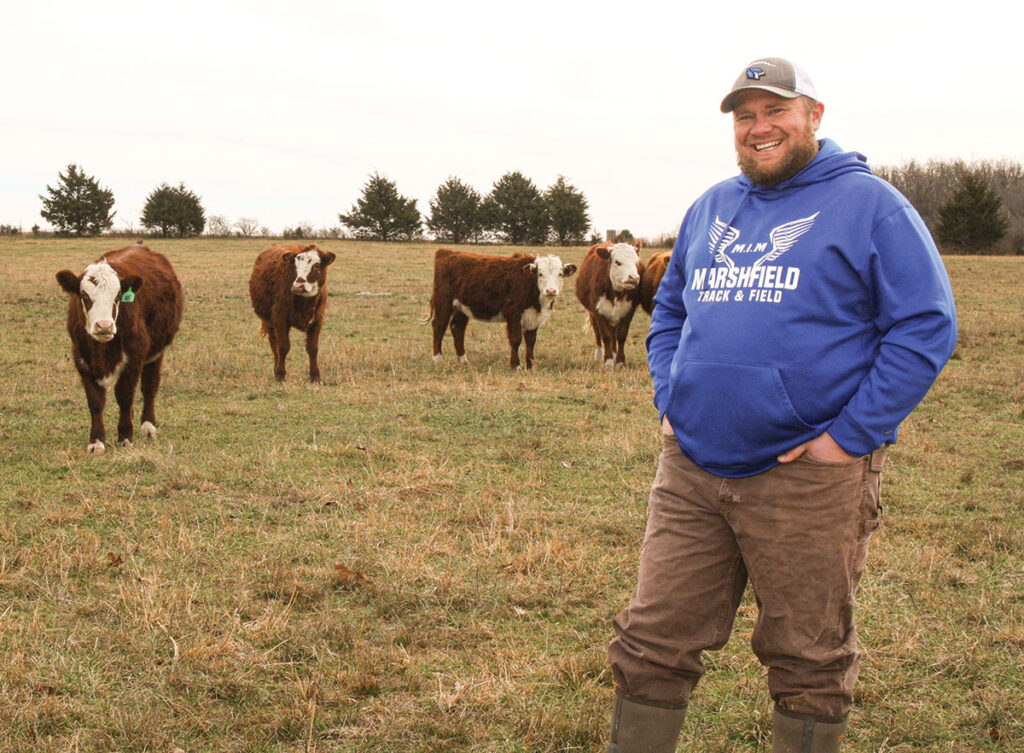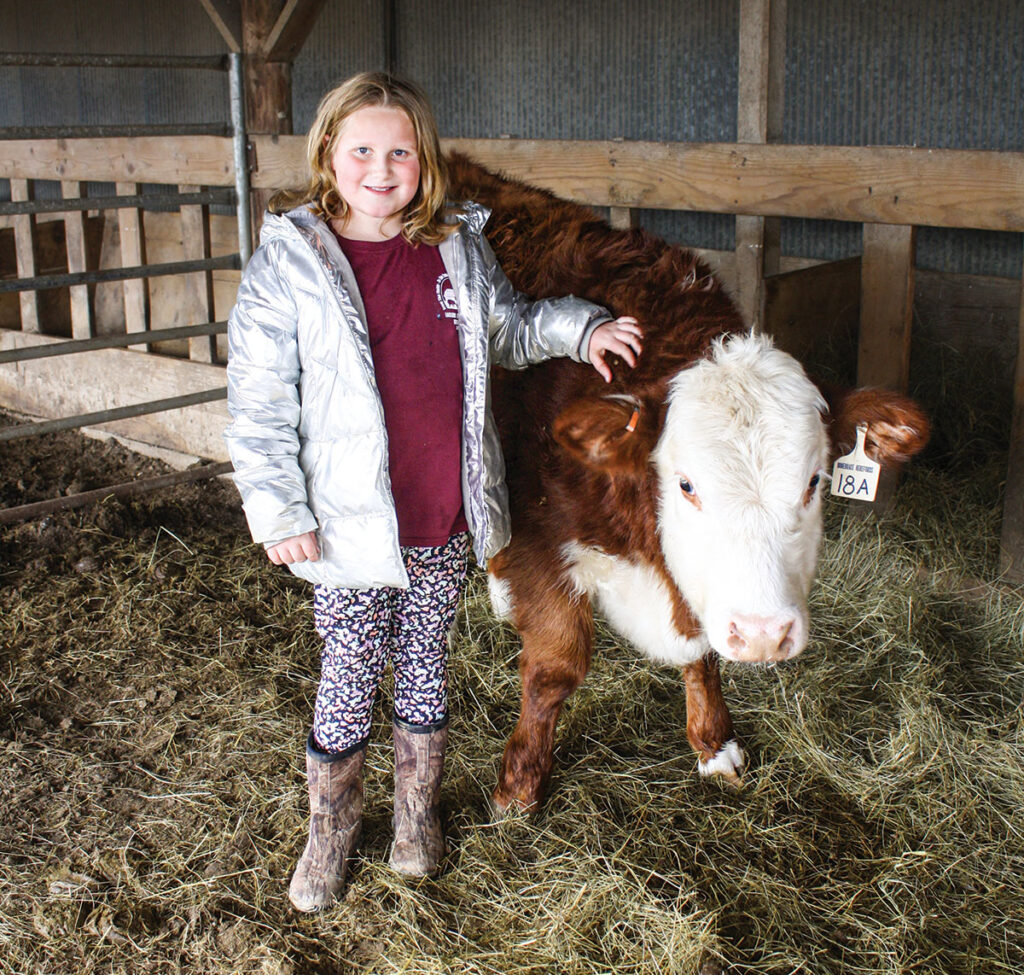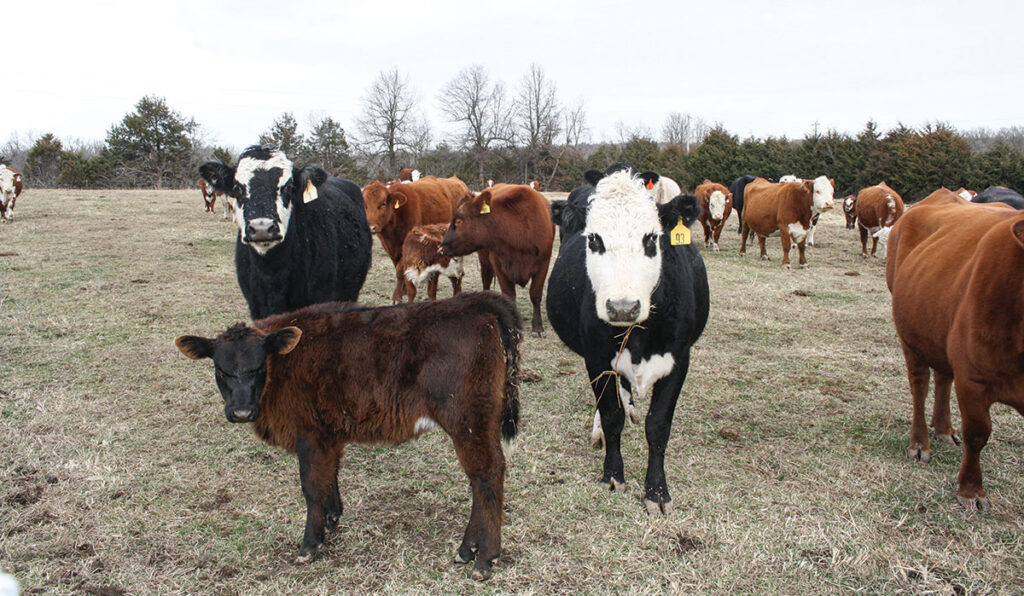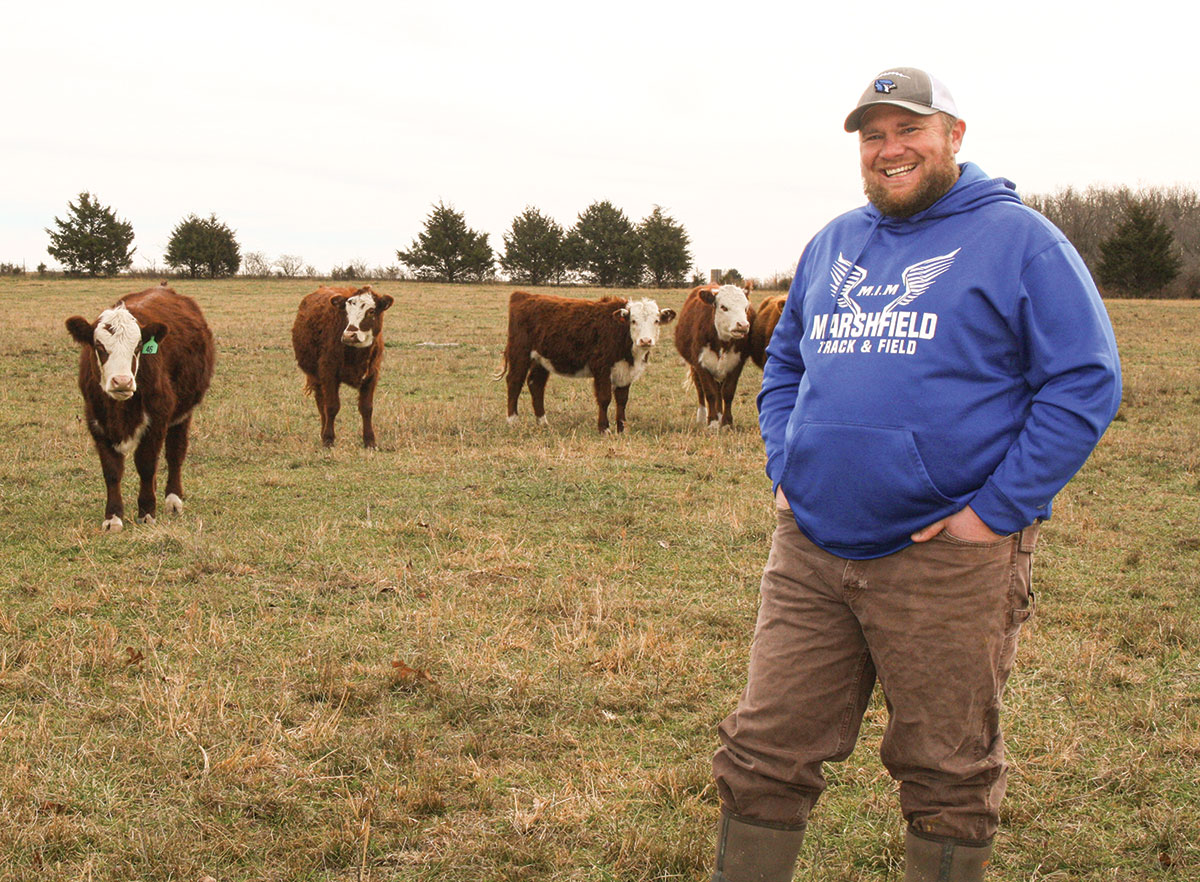
K5 Cattle Company is building an operation for the future
FAIR GROVE, MO. – When Roy Kaderly bought his property between Marshfield and Fair Grove, Mo., he thought he would raise cows, just like his father and grandfather had done before him.
“The country life is what I always knew I wanted, so we bought 10 acres and got a few cows,” he said. “We have pieced together three different properties with the goal to be to leave something for the kids. I would like to leave them more than what I was left with.”
Things, however, began to change for the Webster County, Mo., family.
Roy and his wife Sara’s oldest daughter Reiss was born with multiple heart defects. Reiss endured three open-heart surgeries by the time she was 3 years old. Her heart condition limits her ability to do certain things, such as playing sports like Roy and Sara did. They looked for an activity Reiss, now 9, could be involved in, something that would make Reiss learn about commitment, as well as life skills.

“I thought, why not show cattle?” Roy recalled. “I like the docility of the Herefords, and that’s where we got started with the Herefords.”
Reiss showed her first steer during the 2021 show season and has taken the proceeds from the sale of that steer to purchase her first show heifer, a Hereford named Juliet. She also has two steers she will show at area fairs this summer.
As the family moved towards raising registered Herefords, and Roy felt seedstock production was the route he should take. However, after marketing six of his bulls didn’t pencil out to be very profitable, Roy decided it was time to look at another path.
“I don’t have the name to do it, and it takes a long time to build that name,” Roy said. “And, you have to have such high volume to be profitable. I did the math and I had more money in those six bulls than I had raising butcher beef. I don’t have to hold the butcher beef as long as a bull or put in the volume of feed.”
The Kaderlys always raised their own beef and would sell one or two here and there, but once Roy started focusing on raising high-quality beef, it didn’t take long for K5 Cattle Company’s reputation and client base to grow. Today, Roy has about 75 head of primarily Hereford and Hereford-influenced females that produce calves for his beef market.
“People just started asking if we had any beef for sale, and I started keeping more back,” Roy recalled. “The first year, I did seven head, the next I did 13, and last year I did 22 head.”
Beef is sold and delivered in wholes, halves and quarters, and Roy’s breeding program focuses heavily on carcass traits.
“What I keep for butchering is going to be straight Hereford or Hereford influenced,” Roy, who teaches physical education at Marshfield High School in addition to being an assistant varsity football coach and the head boys and girls track and field coach, explained. “My Herefords outdo my black cattle on carcass score. We breed for ribeye, marbling and those carcass traits.”
K5, named for the five Kaderlys – Roy, Sara, Reiss, daughter Bowen (3) and son McCoy (1) – utilizes an AI program that is done by Denis Turner, whom Roy considers a mentor with his cattle operations, with Hereford semen, followed by cleanup bulls, which are currently Red Angus and Simmental, for all heifers and a large percentage of his mature cowherd.
“For heifers, I do look at calving ease bulls, but with the older cows, they don’t have those calving issues,” Roy said, adding his heifers are bred a little older than some breeders aim for, but he has found older first-timers tend to be more mature at calving and have fewer rebreeding issues. “I’ve also had fewer calving problems by waiting, and the calves are better. I like to breed heifers about a month before my cows, so it gives them a little more time to recuperate before AI or a bull comes back in.”
The herd is broken into fall and spring calving, with the majority being fall calvers.
Calves are weaned at about six months of age, and those going into the beef program are given constant mineral and grass hay until about 600 pounds. Calves will also receive a little grain every couple of days to aid in docility.
“Once we start to finish them, they will get 3 to 5 pounds of grain a day,” Roy explained. “Right now, they get corn, distillers and soybeans. In the summer, I’ll feed a quarter mix that isn’t as hot as far as the corn content goes. When it gets too hot, cattle won’t eat and gain weight, so I will go with that mix in the spring and through the summer. I finish for at least 150 days.”
He added age and weight are not factors when deciding when an animal is ready for processing. He evaluates each animal’s condition and fat cover.

“I don’t want large, framey cattle and that’s one of the reasons I got away from black cattle because they will finish at 1,400 pounds or more. That 1,100 to 1,300 mark is close to where I want to be, and the Hereford influence is a little shorter, a little wider. We look for things like the fat pockets on the tailhead and brisket. You can tell on that topline if an animal has the right amount of fat.”
Calves not selected for the beef program are sent to market. Some higher-quality heifers are retained for the breeding program.
Roy’s goal is for his beef to grade at Choice Plus to Prime, with 61 to 62 percent hanging weight. If a calf does not meet his standards at processing, Roy will carefully evaluate why it could have been substandard, which may include culling that calf’s dam from the herd.
“I can pick and choose the ones I want to keep,” Roy said. “I know 50 percent of it is the bull, but I am using more EPD data. Instead of breeding for low-birth weight bulls, I can use a bull for carcass with my mature cows. Now I look at yearling weights, carcass scores and those traits. I have EPDs on some of my females, but I don’t on the ones I have raised; I know what I have.”
Roy said he works closely with his processor, Zimmerman Processing in Summersville, Mo., to make sure his customers receive the highest-quality beef possible from the K5 herd, even notifying Roy if a carcass is not up to Roy’s standards.
“I don’t want to put out an inferior product, and it’s great to have that working relationship,” Roy said. “I don’t think customers always understand the grading scale, but I have customers who have brought beef in the store, then get a quarter of my beef. First, they are surprised about the amount of beef they are getting, then the quality. I like it when people come back and say they won’t eat any other beef than mine. I have a guy who buys two wholes every year, and he always says it gets better every year.”
While beef production is a focus of the Kaderly operation, Roy is also looking at commercial replacement heifer production.
“The Red Angus Association has some programs out there where if you can prove 50 percent Red Angus, then you can market those animals in those programs,” Roy said. “They also have a premium red baldie program where you can market heifers at a premium sale. I do sell some at the stockyards, and there will always be those sale barn calves I can’t keep everything for the beef market, so I have to have something to sell for cash flow. I think the Simmental will help put on a little more size and put that black on them.”
Roy is also breeding a few Brayford-influenced heifers.
“I have four heifers that we just bred, then there are heifers in another field that are 50 percent Brahman. The thought process behind that is to build up a stock herd of cows that I can send calves to the sale barn from or use as recips down the road. I like looking at the genetic side, and with this Brayford; we will get the first calf off of them and do a little embryo transfer in the future. It depends on how serious Reiss gets into showing and see if we can improve what she’s going and also improve what I’m doing.”
To help accomplish the goals of 5K Cattle Company, Roy has begun implementing an intensive grazing program on about 60 acres of his leased and owned property, which is about 215 usable acres in total. With that system in place, Roy said he can better utilize forages and manage more cattle.
“I’m excited to be able to incorporate it,” Roy said. “Here at this farm, the ground has a lot of clay, so we disked up three fields, and planted 5 to 6 pounds of turnips, 5 to 6 pounds of radishes and grazed them off. We’re trying to break up that soil compaction, and this year I’m going to plant Sudan, graze it off for summer pasture, the do the radishes again. We’re also going to set up some lespedeza and other grasses.”
K5 Cattle Company produces most of its own hay, with Roy implementing Sudangrass and other forages to improve quality and production, and working to improve soil health with soil testing and fertilization as needed.
As the cattle operation evolves, Roy has established a few goals.
“The show heifer side is going to take a little time, and we are going start slow with that,” Roy explained. “With the main herd, I want to increase my daily rate of gain on these steers, so the farm-to-table aspect becomes more profitable; the less inputs I have to put in to get the same product is the goal. I am also trying to find some of that niche market with the Red Angus and get premiums for my calves by running those bulls or being tied to the farm the bulls come from. I am just trying to find a little extra here and there to make it work. Making a little extra is important, especially if you’re just starting. I’m relatively new to this will be year nine or 10 of being an actual owner/operator of a farm. Nothing was given to me, and I have had to buy everything, and we are trying to grow this to where this is self-sustainable.
“I’m trying to lower my cost through genetics, through intensive grazing so I can run a higher volume of cattle on less land. My farm is a little more labor-intensive now, but the goal is to get it where it’s easier to run.”
He has already met a couple of his goals.
“I got more cows than my dad had; it’s these little accomplishments,” Roy said with a smile. “My grandfather had hundreds of head of cattle and a turkey business, and being able to have those conversations about farming means a lot.”







